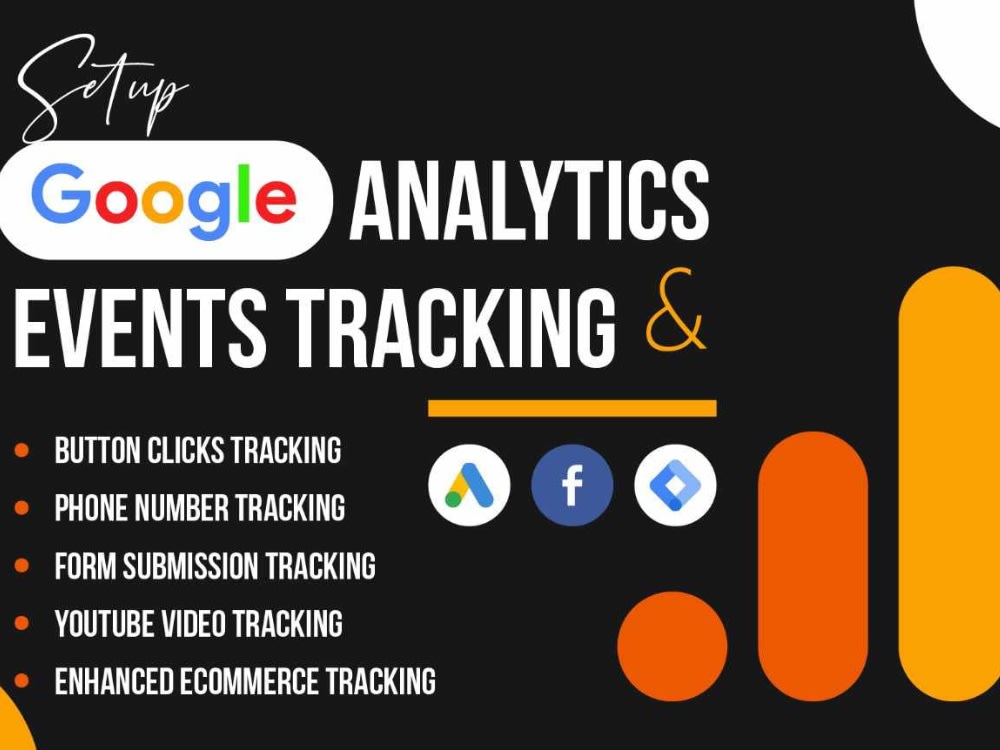A Biased View of Google Analytics Event Tracking
Table of ContentsTop Guidelines Of Google Analytics Event TrackingGoogle Analytics Event Tracking Things To Know Before You BuyThings about Google Analytics Event TrackingAll About Google Analytics Event TrackingGoogle Analytics Event Tracking Fundamentals ExplainedGoogle Analytics Event Tracking for Dummies

If you're going to establish event tracking by hand, then you're mosting likely to have to include some added code to the elements you wish to collect data from. The code you're mosting likely to work with will look something similar to this: There are four elements within that code fragment that you're mosting likely to need to define on your own: occasion, Category, occasion, Activity, event, Label and occasion, Value.
As you can see, two of these are needed (group and action) while tag and worth are optional. Everything relies on the kind of info you want communicated back to Google Analytics when an individual clicks the specified element (Google Analytics Event Tracking). It will be a lot easier to specify these elements if you evaluate your website and choose which elements/actions you want to track
Google Analytics Event Tracking Things To Know Before You Buy
Now, you'll be asked to specify the and and you'll desire to select from the drop-down menu that shows up when you click. This will certainly bring up the same event monitoring parts we looked at earlier, which you'll need to complete. As soon as you've specified these, you can relocate to the second box and select the trigger that will certainly terminate your tag.
On the following display, you'll additionally have an area for calling your trigger and, if you click on the box, you'll see a checklist of the various triggers you can pick. In this situation, we wish to pick and after that choose the choice below. You'll set the trigger to just fire when a component is clicked with a Link that contains the.
Basic - Occasion tracking! Event monitoring offers you a picture of exactly how customers involve with your site and organization. Read on as we check out every little thing you need to understand, including what it is, why you should track events, just how to manage occasions data, and various other pertinent FAQs you might have.
Unknown Facts About Google Analytics Event Tracking
You can switch in between your occasion groups, activities, and labels in the Top Events report. This record is crucial for excavating additionally right into research study on a particular event category. The Occasion Pages record presents the web pages where events are set off. In this section, we can analyze the top pages that drive events.
It reveals you the path they take as they relocate from one event to the next and aids you to establish which web content engages your audience the a lot of. Events in Google Analytics have 4 primary elements. They are additionally a part of the event monitoring code. Google Analytics uses these codes to track customer interactions and group them right into event records.
Select "Variables" > "Configure". A list of the criteria you can track on your web site is on the right. Under Clicks, Forms, and Video clips, double-check each parameter. After examining all required areas, you can click "X" site here to close the home window and return to the Overview menu on the.
The Main Principles Of Google Analytics Event Tracking
Selecting "False" will protect against that session from being a bounce. If you haven't done so, you may need browse around these guys to establish a variable in the Google Analytics Setups box. Click "New Variable ..." if you can not discover one to pick. Hereafter, enter your GA monitoring ID in the Monitoring ID field.
Your ID will be on top of the display. To do this, adhere to the following collection of activities: After configuring the fields, select the "Triggering" section. When configuring your new trigger, click the "+" switch, after that the "pencil" switch, after that select your trigger type. Label your trigger and specify the conditions that lead to set off firing.
The Facts About Google Analytics Event Tracking Revealed

When it familiarizes which sections and aspects are leading clients via your conversion funnel, you still will not know. So, without event monitoring, GA reports will only count visits as single-page sessions, even if customers spend a great deal of time on one web page and engage with it substantially (and a bounce).
How does event tracking achieve this?Single-page sessions known as bounces start and conclude on the same page. Without event tracking, GA will classify a user's check out as a bounce if they don't navigate to one more page, despite how they interact with it. For instance, a video-rich page can have a check these guys out higher bounce rate if occasions are not tracked.
The Single Strategy To Use For Google Analytics Event Tracking
For GA to take event hits into account when determining bounce rates, you have to select "Non-interaction occasion" as "False" during the GTM setup. Establishing "event objectives" with event activity is an outstanding way to monitor user tasks you value very, such as new lead entries or clicks on a phone call to activity.